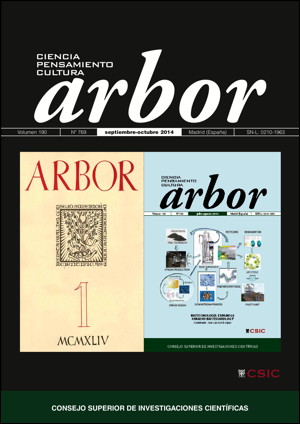Calendars, clocks and a cash machine. Five patents in the Región de Murcia and two advertising applications (1887-1928)
DOI:
https://doi.org/10.3989/arbor.2014.769n5004Keywords:
Calendar, Clock, Automated cash machine, Patent, Advertising, Cartagena, Cieza, Murcia, 19-20th CenturiesAbstract
By the late nineteenth and early twentieth centuries, clocks and calendars had become everyday objects in homes, classrooms and workplaces. Advertising in the press at the turn of century shows there to have been demand for various sorts of timepiece. This demand spurred the intellectual efforts of inventors who rushed to patent devices either to measure or register the passing of time or simply to satisfy the curiosity these fascinating devices aroused. Five time-measurement-related inventions were patented in the Region of Murcia between 1887 and 1928. Two calendars in 1887, an automated cash machine in 1913 and two inventions in 1928 that exploited the curiosity and the need to measure the time to attract the public’s attention. We discuss these five patents and the contemporary press to get closer to their inventors, achievements and the time in which they lived.
Downloads
References
Barquero, J. D. (2004). Enciclopedia del reloj de bolsillo: Historia, catalogación, mecánica y detalles de las mayores colecciones públicas, privadas y museos internacionales. Barcelona: Amat Editorial.
Botrel, J.-F. (2003). Almanachs et calendriers en Espagne au XIXe siècle: essai de typologie. En: Lu.sebrink, H.-J. Les lectures du peuple en Europe et dans les Amériques du XVIIe au XXe siècle. Bruxelles: Editions Complexe, pp. 105-126.
Cabrera, D. H. (2006). Lo tecnológico y lo imaginario: las nuevas tecnologías como creencias y esperanzas colectivas. Buenos Aires: Biblos.
Carabias Torres, A. M. (2012). Salamanca y la medida del tiempo. Salamanca: Universidad de Salamanca.
Coulanges, F. (2006). La Ciudad Antigua. Valladolid: Maxtor.
Herrero García, M. (1955). El reloj en la vida española. Madrid: Roberto Carbonell Blasco.
Mayr, O. (2012). Autoridad, libertad y maquinaria automática en la primera modernidad. Barcelona: Acantilado.
Montes Bernárdez, R. (1999). La energía que ilumina. Historia de la iluminación en la Región de Murcia (1797-1935). Murcia: Consejería de Industria, Trabajo y Turismo, CajaMurcia.
Nos Aldás, E. (2007). Lenguaje publicitario y discursos solidarios: eficacia publicitaria, ¿eficacia cultural? Barcelona: Icaria Editorial.
Ortiz-Villajos, J. M. (1999). Tecnología y desarrollo económico en la historia contemporánea: estudio de las patentes registradas en España entre 1882 y 1935. Madrid: Oficina Española de Patentes y Marcas.
Sáiz González, J. P. (1999). Invención, patentes e innovación en la España contemporánea. Madrid: Oficina Española de Patentes y Marcas.
Serrano Tierz, A. y Biel Ibáñez, M. P. (2012). Estética del producto industrial y su representación gráfica. Zaragoza: Universidad de Zaragoza.
Velasco, H. M. (2000). Cultura tradicional en fragmentos. Los almanaques y calendarios y la cultura 'popularizada'. En: Díaz Viana, L. y Godino López, A. (eds.), Palabras para el pueblo (vol. I: Aproximación general a la literatura de cordel). Madrid: Consejo Superior de Investigaciones Científicas, pp. 121-144.
Published
How to Cite
Issue
Section
License
Copyright (c) 2014 Consejo Superior de Investigaciones Científicas (CSIC)

This work is licensed under a Creative Commons Attribution 4.0 International License.
© CSIC. Manuscripts published in both the printed and online versions of this Journal are the property of Consejo Superior de Investigaciones Científicas, and quoting this source is a requirement for any partial or full reproduction.
All contents of this electronic edition, except where otherwise noted, are distributed under a “Creative Commons Attribution 4.0 International” (CC BY 4.0) License. You may read the basic information and the legal text of the license. The indication of the CC BY 4.0 License must be expressly stated in this way when necessary.
Self-archiving in repositories, personal webpages or similar, of any version other than the published by the Editor, is not allowed.














